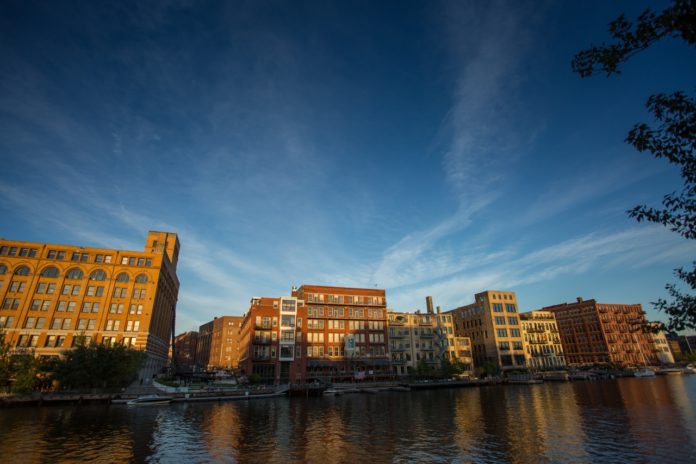Apartment conversions are at an all-time high in the U.S. and Milwaukee, according to a recent study from RENTCafe, an apartment search website.
The analysis found that throughout the last 70 years, nearly 2,000 old buildings were converted into residential apartments in the U.S., including around 800 in the last decade alone. Milwaukee has converted 36 old buildings since the 1980s, which brought a total of 3,262 apartments to the market. More than half of them were delivered in the last decade.
Milwaukee ranks among the top 10 cities nationally for adaptive reuse — reusing an existing building for a purpose other than what it was originally intended for. The city is tied with Cleveland and is ahead of larger cities such as Dallas and Seattle. Chicago ranks No. 1 with 91 converted apartment buildings.
“Adaptive reuse is important for cities like Milwaukee, which has a rich history with distinct architectural and building characteristics,” said UW-Milwaukee Prof. Lingqian Hu, who chairs the university’s Department of Urban Planning. “The buildings that are preserved generally have solid structural integrity and prominent locations, which can continue to attract new users to these buildings and the neighborhoods.”
One of Milwaukee’s first repurposed buildings is the old CW Fischer Furniture Store and Warehouse, which created 112 new units, according to RENTCafe. The most recent adaptive reuse project is Milwaukee Fortress in 2019, which added 132 new apartments to the local rental market.
Milwaukee’s most popular type of repurposed buildings is former factories. A total of 12 factories and eight warehouses were converted into apartments in the last 40 years, according to RENTCafe. As a former industrial center and harbor city, Milwaukee has had warehouses, factories and tanneries that sustained the trade business. Decades later, those buildings are being converted to sustain the housing market.
“Most of these buildings are converted to high-end residential use. I think the reason is the high costs of restoration and remodeling, especially to comply with building codes,” Hu told WisBusiness.com.
When asked if these high-end abodes are sustainable in a city strapped for low-income housing, she responded adaptive reuse can increase the housing supply, which will eventually affect the price.
Hu added that while many of the buildings are turned into condos or apartments, she expects more agile urban built environments for people to live, work and play post-pandemic.
“With high ceilings and large open rooms, these buildings have advantages in shaping further urban lives by accommodating diverse and flexible usage in one building, including not only housing but also offices, retail, restaurants and other amenities,” she said.
The apartment data in the study was provided by RENTCafe’s sister company, Yardi Matrix, a business development and asset management tool. The study is based exclusively on apartment data related to buildings containing 50 or more units.
See the full study: https://www.rentcafe.com/blog/apartmentliving/adaptive-reuse-milwaukee/
-By Stephanie Hoff
WisBusiness.com






